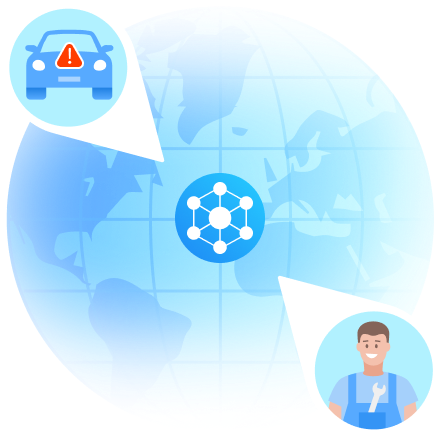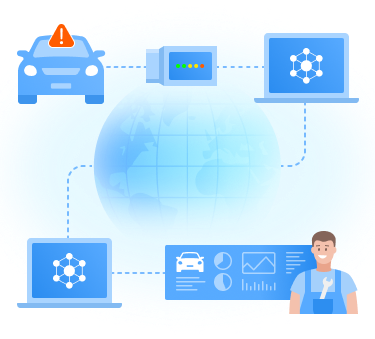Modern tools such as diagnostic scanners enable technicians to perform vehicle diagnostics to investigate and resolve problems remotely. The backbone of a remote diagnostic solution is its software. FlexiHub is a solution that lets you access a scanner remotely over the Internet to collect diagnostic data. It’s a simple solution that makes life easier for technicians and clients. Click the button below to get started with this valuable tool or continue reading to learn more about this remote diagnostic tool for OBD (On-Board Diagnostics).


FlexiHub

Using FlexiHub, technicians can access remote, network-connected OBD tools as if they were physically connected to the devices. This facilitates faster and more efficient diagnosis and resolution of vehicle problems without requiring input from local experts.
FlexiHub operates as a communication server to connect technical experts with diagnostic information generated from a remotely located vehicle. This approach provides significant savings in time and money. Technicians do not need to travel to the vehicle to diagnose the problem for faster problem resolution.
You need the following components to remotely diagnose a vehicle with FlexiHub:
An OBD2 scanner with a J2534 Pass-Thru interface of a J1850 diagnostic tool.
A laptop connected to the Internet.
A vehicle diagnostic testing application.

If you operate a remote OBD diagnostic service, the best choices are the subscription-based Teams Plan or the PAYG-based Business Plan.
The Business Plan involves purchasing a package of one-time connections to remote diagnostic devices. When you use all of the sessions, you can simply purchase additional ones.
The Team Plan lets you create an account for your team of technicians. This plan allows you to initiate an unlimited number of sessions during the duration of the subscription.

Organization uses a centrally installed diagnostic program and several remotely located service centers. Customer vehicles are connected to laptops using USB ports at the remote centers. FlexiHub enables data obtained from the vehicles to be transmitted over the Internet where it is interpreted by the diagnostic program for more efficient service and improved customer satisfaction.
Reports a dramatic improvement in workflow automation made possible by FlexiHub. The software allows the company to remotely reprogram GPS devices used to track school buses. They connect the unit to an Android device or laptop and FlexiHub enables remote engineers to access the GPS unit and perform the updates.
The technical director at an automotive company also had great results using FlexiHub to facilitate the establishment of a machine repair business. The company uses FlexiHub in providing access to the USB interfaces of customers’ remotely located vehicles. Technicians can perform troubleshooting over the Internet for faster and more efficient results.
Remote vehicle diagnostics help reduce costs in multiple ways. Eliminating the need for a technician to physically visit the vehicle is one way of reducing costs. The ease with which remote diagnostics can be performed facilitates proactive diagnostics that can find and address small issues before they become major problems.
FlexiHub improves the productivity of fleet vehicles by using remote diagnostics to identify potential problems before they lead to a breakdown. Keeping fleet vehicles on the road and minimizing delays results in better customer relations and a better bottom line.
Vehicle owners are often challenged when faced with issues that may require repair. Remote diagnostics enables them to have their vehicle evaluated by an expert without having to bring it to the service center. They only need to travel to the center if the diagnosis reports problems that need to be addressed.
A remote vehicle diagnostic system makes it possible for skilled technicians to diagnose and recommend the repairs necessary to keep vehicles on the road. Customers can easily access the knowledge of experts located anywhere in the world with remote diagnostics.